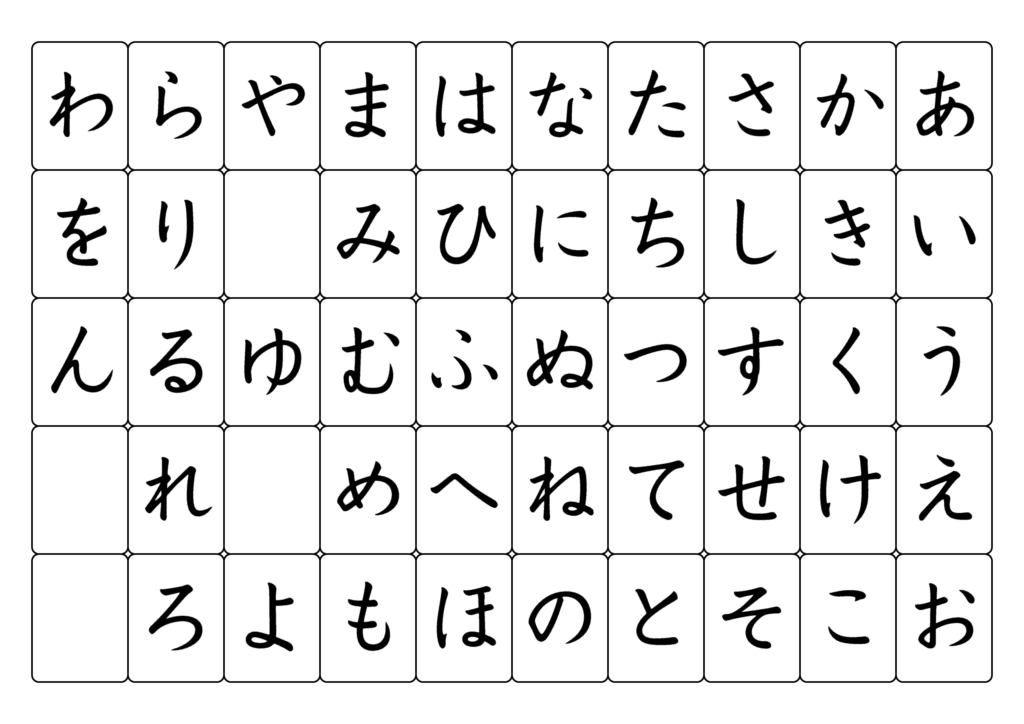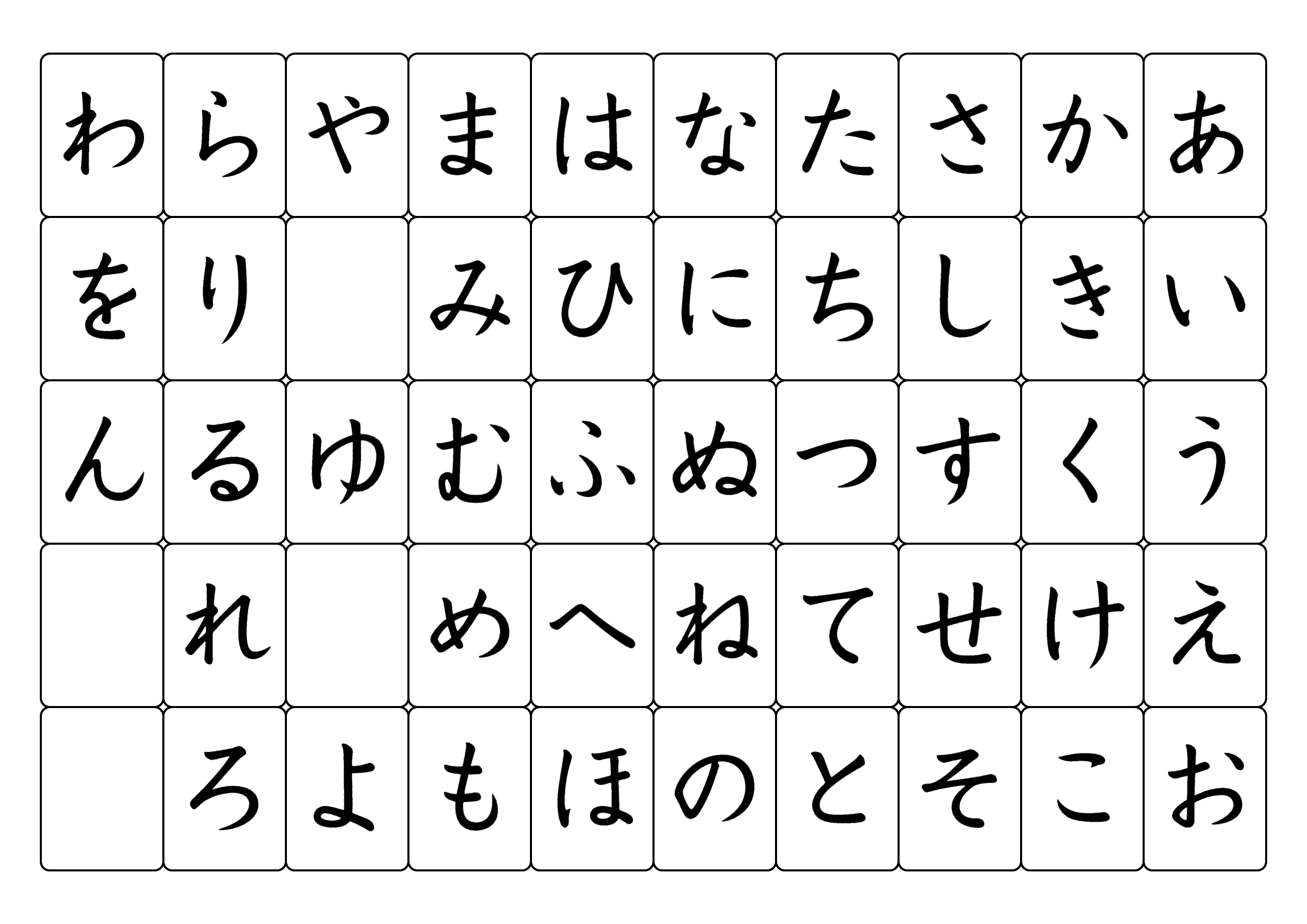ひらがな (hiragana) and かたかな (katakana) are two of the three writing systems used in the Japanese language, the third being 漢字 (kanji), which are Chinese characters adopted into Japanese writing. Each of these systems has its own distinct characteristics and usage.
Here’s a breakdown of the differences between ひらがな and かたかな:
Form and Appearance:
- Hiragana: Hiragana characters are more rounded and cursive in appearance. They consist of 46 basic characters and are used to write native Japanese words, grammatical elements such as particles and verb endings, and for furigana (small characters used to provide readings for difficult kanji).
- Katakana: Katakana characters are more angular and straight in appearance. Like hiragana, there are 46 basic katakana characters. Katakana is primarily used for writing foreign loanwords (gairaigo), onomatopoeic words, technical and scientific terms, and for emphasis.
Hiragana characters

Katakana characters

Usage:
- Hiragana: Hiragana is used for native Japanese words, grammatical elements, verb conjugations, and as furigana to provide readings for kanji characters, especially for children or learners.
- Katakana: Katakana is used primarily for foreign loanwords (e.g., コーヒー “koohii” for “coffee”), technical or scientific terms, onomatopoeic words, names of plants and animals, and for emphasis or stylization in writing.
Readability:
- Hiragana: Hiragana is generally considered easier to read and write compared to katakana due to its simpler and more flowing shapes.
- Katakana: Katakana can sometimes be more challenging for learners due to its angular shapes and because it’s often used for less familiar or foreign terms.
Context and Conventions:
- Hiragana: It’s typically used in informal writing, children’s literature, and in contexts where simplicity and readability are prioritized.
- Katakana: It’s commonly seen in formal writing for foreign terms, scientific contexts, and technical documents.
In summary, hiragana and katakana serve different purposes in Japanese writing. Hiragana is used for native Japanese words and grammatical elements, while katakana is used for foreign loanwords, technical terms, and for emphasis. Understanding when to use each system is essential for effective communication in Japanese.



Comment